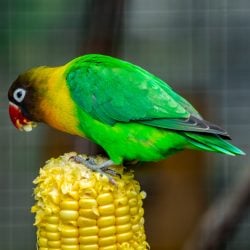Last Updated on by Mitch Rezman
Normal Values for a Small Bird
- Temperature: 108 – 112 Fahrenheit
- Pulse Rate: 600 – 800 bpm
- Respiration: 75 – 100 respirations per minute
Normal Values for a Large Bird
- Temperature: 108 – 112 Fahrenheit
- Pulse Rate: 200 – 300 bpm
- Respiration: 30 – 50 respirations per minute
Impress your friends at the next bird club meeting with these tidbits
- Amazon parrots lack a preening or uropygial gland.
- African Gray parrots Iris color is black for the first 4 months of age, but changes fully to yellow by 4 years.
- The pressure exerted by a large macaw beak can be greater than 350 psi so they can access the meat of walnuts, macadamia nuts, or coconuts,
- The edges of the beak squeezing your finger making you go white and break out in a cold sweat are called “tomias”.
- Brush-like, papillae-tipped tongues allow lories and lorikeets to eat nectar and pollen. These nectarivores possess a weakly muscled crop, proventriculus, and ventriculus or gizzard.
- The Quaker Parrot gets their name from their unusual behavior which looks like they’re quaking and shaking. In reality this head bobbing and shaking behavior is quite normal.
That was fun!
Author Profile
Latest entries
 PigeonsJune 20, 2025How Do Parrots Thrive in Cities Outside Their Native Habitats?
PigeonsJune 20, 2025How Do Parrots Thrive in Cities Outside Their Native Habitats? Feeding Exotic BirdsJune 20, 2025Is Corn On the Cob Safe for Pet Birds?
Feeding Exotic BirdsJune 20, 2025Is Corn On the Cob Safe for Pet Birds? Bird & Parrot AnatomyJune 19, 2025Would You Like a Comprehensive Guide for Training Your Bird?
Bird & Parrot AnatomyJune 19, 2025Would You Like a Comprehensive Guide for Training Your Bird? Feeding Exotic BirdsJune 19, 2025Here Are Three (Video) Strategies to Help Your Bird Forage
Feeding Exotic BirdsJune 19, 2025Here Are Three (Video) Strategies to Help Your Bird Forage




